Over the past 30 years, Pro-Ject have developed some of the most impressive engineering and manufacturing facilities of any company in high-end audio. There is nothing in North America that can compare to their operations in multiple countries in Europe and it goes well beyond the core brand.
Their list of OEM customers is extensive and the overall business model also includes EAT and Musical Fidelity which was acquired only recently.
Pro-Ject sells the most audiophile turntables in the world and has the distinct advantage of making most of their components in-house and the R&D resources to develop better sounding turntables for less money.
When you run a state-of-the-art manufacturing facility, you can experiment with different materials and setups and get the final product to market much quicker.
Audio-Technica sell a lot of turntables and cartridges, but does not have the ability to make their own loudspeakers, CD players, cables, DACs, and headphone amplifiers internally.
Rega, who are their largest natural rival, probably comes the closest, but their focus has also turned like Pro-Ject on other product categories where they can complete the circle and offer the consumer a one-stop shopping experience.
Pro-Ject is also part of the McIntosh Group here in America where it can be packaged with Rotel, Sumiko, Sonus faber, and McIntosh products through a vast dealer network that only enhances its appeal.

Whilst their primary focus is on turntables below $600 — Pro-Ject also offers a number of higher priced models including the Debut PRO (see review) and X2 B that deliver excellent performance for the money.
Having spent a lot of time with the Debut PRO, it remains my primary choice for consumers looking to spend up to $1,000 on a high-end turntable; with room to grow as Pro-Ject introduces accessories including isolation platforms, cartridges, and tonearms that can elevate the performance of this table to another level.
All of that begs the question — why spend the money on upgrades (for an already excellent turntable) when you could have something like the balanced X2 B for around the same amount of money.
Does balanced really make a difference?
My experience suggests that it does if you have to contend with certain noise issues.
Almost 22 years ago, I invested in a very expensive turntable and felt that I had reached vinyl nirvana. I paid a professional $200 to properly install the cartridge, setup the table which had a finicky suspension system, and help me mount the turntable shelf to the wall.
My building at the time was a pre-war in downtown Toronto that needed an upgrade on the electrical front. Noisy to say the least.
No matter what I tried, my turntable setup always sounded noisy; ground loop issues, constant hiss, and it became a a source of depression (first world problems). Why bother spending almost $8,000 on such a system if it sounded terrible.
A local dealer suggested that I have my arm and table modified so that I could run a fully balanced rig; which also included upgrading to a balanced phono stage. I sold a few other items to facilitate the changes.
Extreme? Perhaps.
But when I listened to the same records — I was stunned by the differences in clarity, noise floor, and overall dynamics of the sound.
Does a balanced setup always sound better? Not necessarily and I’m not convinced that every manufacturer who markets “balanced” is really offering that.

Handmade in Europe, the Pro-Ject X2 B is designed to deliver the best possible performance for under $1,800 USD; the new lineup of truly balanced connection products are the brand’s first turntables with dedicated, fully balanced mini XLR outputs.
This connection optimizes the performance of moving coil cartridges when used with a compatible phono preamplifier. MC cartridges are inherently balanced (isolated signal from ground) where their moving magnet (MM) counterparts are configured differently; they are grounded internally and should only be used with single-ended (RCA) connection for best performance.
Moving magnet cartridges need not apply here if you wish to experience the benefits of going fully balanced.
Pro-Ject outfits the X2 B differently depending on the market where you buy the turntable; UK customers get the Ortofon Quintet Red MC, whilst North American customers will find a pre-installed Sumiko Rainier.
The Rainier is fine and performed well, but the difference in sound quality when I substituted my Sumiko Blue Point No. 3 was substantial.
X2 B Features
The X2 B is a rather attractive looking deck offered with a selection of finishes, including gloss black, satin black or white, and a rather posh looking satin walnut that conveys the uptick in price over the Debut PRO.

The rear panel of the table includes a set of RCA phono sockets and a single mini-XLR socket which handles both left and right channels in balanced mode.
Pro-Ject goes slightly overboard with its packaging which includes a kitchen sink of setup accessories and tools; the X2 B is also not a very large table (460 x 150 x 340mm (W x H x D) which should be viewed as a benefit if you do not have a lot of setup space.
The first obvious difference between the X2 B and the Debut PRO is the weight; the more expensive table weighs in at almost 23 pounds; which is a substantial 10 pound difference.
The X2 B offers an electronic speed controller (33.3, 45, and 78 RPM), 9-inch carbon/aluminum tonearm (which allows for VTA and azimuth adjustments) and almost 5 pound, 1.18-inch thick acrylic platter.
Having listened to multiple Pro-Ject turntables over the years, there has been a noticeable uptick in quality in regard to their platters and the durability of their tonearms.
Having said that — if one is seriously considering this table, there are a number of upgraded tonearms available from Pro-Ject that could potentially elevate the performance of this table to another level, but it’s not necessary at this point.

System
The Pro-Ject X2 B with the Rainier and Sumiko Blue Point No. 3 spent most of the review process connected to the Pro-Ject Phono Tube Box DS2, Moon by Simaudio 610LP and a Pro-Ject Phono Box S3 B Balanced MM/MC Phono Preamp, which I borrowed to try out the balanced connections.
I acquired an adapter to use the mini-XLR with the Canadian phono stage; which will be the case for anyone who decides to use the stereo XLR output with a pre-amplifier that has a standard pair of XLR inputs.
Interestingly, Pro-Ject has expanded its phono pre-amplifier lineup which now includes the Phono Box RS2 Balanced MM/MC Phono Preamp ($1,999.00) and Tube Box DS3 B Balanced Tube MM/MC Phono Preamp ($1,099.00) — both are designed to work with the XS2 B and other turntables with balanced outputs.
An IsoAcoustics ZaZen II Isolation platform was used underneath the turntable in every scenario.
My Cambridge Audio Edge A Integrated Amplifier and the Evo 150 both offer a single set of balanced inputs which allowed me to test both outputs on the turntable and associated phono pre-amplifiers.
Loudspeakers included the Magnepan LRS, Q Acoustics 5040, and Bowers & Wilkins 703 S3.

Listening
Is there a huge gap between the Debut PRO and the X2 B? Fair question.
If running the same cartridge like a Sumiko Wellfleet, I would still give the edge to the X2 B when it comes to impact and overall resolution, but the gap isn’t enormous.
However, when running a MC cartridge like the Sumiko Blue Point No. 3 into one of the Pro-Ject balanced phono pre-amplifiers or something like the Moon by Simaudio 610LP — the gap between the two tables is rather enormous.
The clarity, bass impact, soundstage depth and width, and overall dynamics of the system totally changes.
The Pro-Ject X2 B goes from being a very good $1,799 turntable to a rather exceptional table that can compete with with some tables in the $2,000 to $3,000 range and I’ve heard enough of them to know.
And we are including turntables like the Rega Planar 6, Technics SL-1200GR2, and MoFi UltraDeck.
Listening to Miles Davis, Donald Byrd, and Dexter Gordon, there was clearly greater tonal weight to almost every instrument in the mix, but far more resolution and presence as well.
Horns that felt slightly more reserved through the Debut Pro/Wellfleet, engaged one rather differently.
Donald Byrd’s “Cristo Redentor” is one of those rare pieces of music that makes me lose myself in the moment; where one wanders over to the window and watches the world below but still feels every note.
That doesn’t happen very often.
The X2 B makes everything larger and pushes it forward into the room — but knows exactly when to stop.
And that experience was clearly different with each loudspeaker; especially the Magnepan LRS that can create an ethereal wall of sound that envelops the entire listening space.
Vocals were both bolder and more precise through the X2 B with either one of the balanced phono pre-amplifiers, but one does need to spend $8,500 on something like the 610LP to experience what the X2 B is capable of?
The existence of products like the two entry-level balanced Pro-Ject phono pre-amplifiers makes that a silly proposition. That the X2 B can handle itself rather confidently with one of the best phono pre-amplifiers available speaks volumes about it capabilities and long-term potential.

I suspect that the Tube Box DS3 B Balanced Tube MM/MC Phono Preamp for $1,100 with a high quality MC cartridge (Sumiko, Ortofon, Hana, or even Soundsmith) would make an outstanding package.
Having lived with the Tube Box DS2 for almost 3 years — even a small uptick in quality with this table would be more than enough for myself and there is a noticeable difference when using the version with tubes.
I prefer some additional coloration when listening to the LRS and Q Acoustics 5040; both speakers offer a more neutral tonal balance and a rather crisp treble range. The balanced set-up from start to finish might be too much for either speaker if the amplifier or phono pre-amplifier does not add some warmth to the overall sonic signature.
But what about you?
Using the RCA outputs, the X2 B will work perfectly fine into almost any phono pre-amp and with most MM or MC cartridges; the pre-installed Rainier is a surprisingly competent and dynamic sounding cartridge considering its rather low price.
What it gives up in comparison to the more expensive Blue Point No. 3 is greater clarity, detail retrieval, and a more spacious sounding presentation.

Final Thoughts
$1,800 is not an inexpensive starting point for 99% of the record listening audience and one has to accept that reality. Most consumers who purchase the Pro-Ject X2 B are unlikely to upgrade from the Sumiko Rainier after only a few months.
And that’s perfectly fine. The table delivers far more impact and clarity than the vast majority of turntables priced below $1,500.
But where this table gets really exciting is when you use its balanced output into a phono pre-amplifier with balanced inputs. Everything about its performance takes a rather significant step forward.
If you are lucky enough to have a balanced pre-amplifier or integrated amplifier — those improvements are magnified even more.
Switching from the Rainier to a higher quality low output MC cartridge will only elevate the sound to another level.
But I do think one should make these incremental changes over time and really listen for the differences before spending any additional funds.
Before one gets to the finish line, it’s possible to spend over $4,500 on this turntable with a better cartridge, balanced phono preamplifier, and one of Pro-Ject’s upgraded tonearms.
Would that even make sense for the typical buyer?
Knowing what I discovered listening to this turntable over many months (and there were some gaps due to family health issues), this is clearly a viable platform for those who might desire to upgrade their vinyl playback system over time.
Using the balanced output into the balanced phono pre-amplifiers made a substantial difference to the sonic presentation and my first upgrade would be there.
The Pro-Ject X2 B is the real deal.
Where to buy: $1,799 at Amazon | Crutchfield
Related Reading:



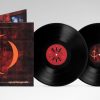

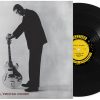
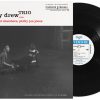




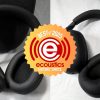
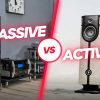
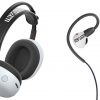
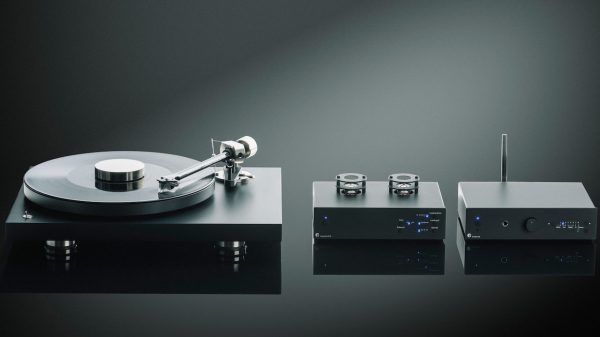
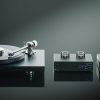
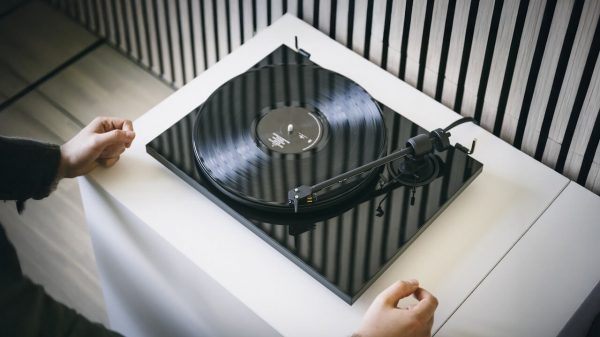
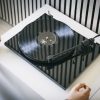
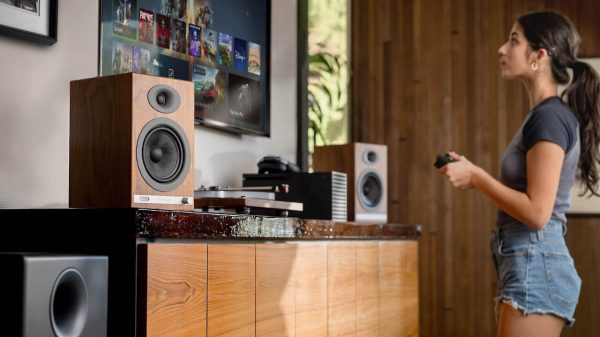
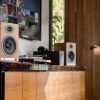
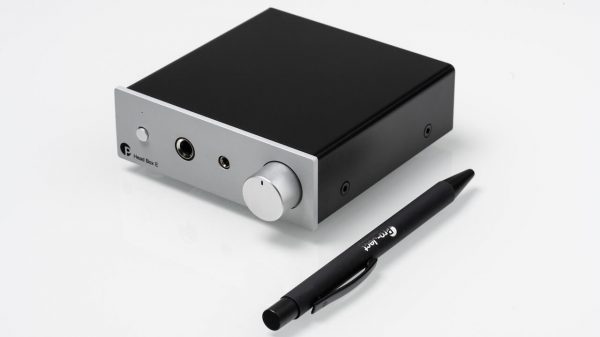
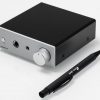
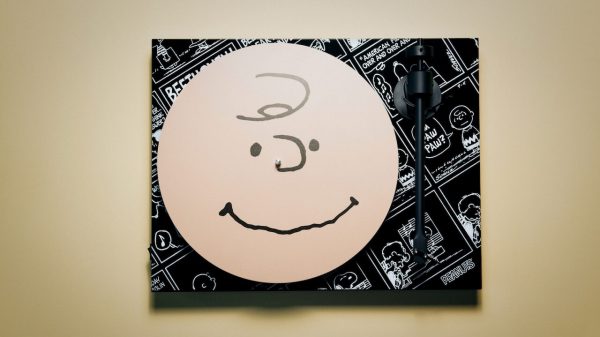
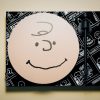
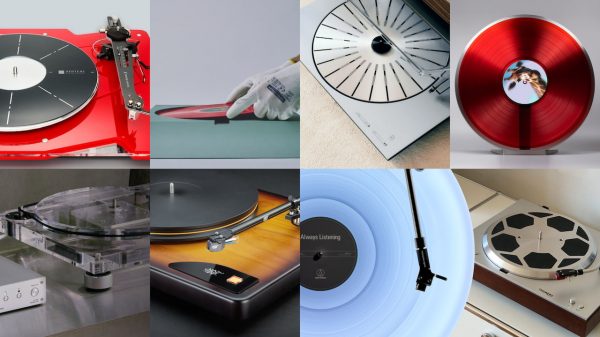


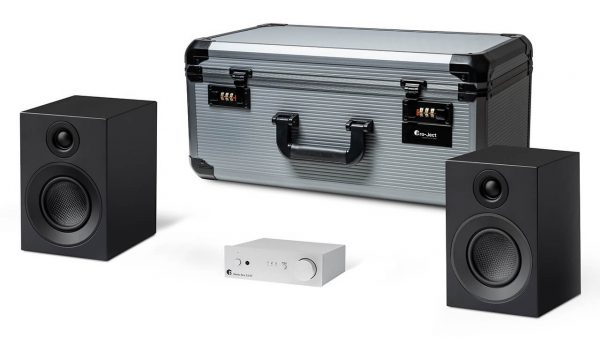
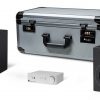











ORT
February 15, 2024 at 1:26 am
Gorgeous!
I have the Pro-Ject X2 with the Sumiko Moonstone cartridge and the reeeeeeeeeeeeeeeeeeeeally thick acrylic platter. It is heavy for a ‘table and is without a doubt my favourite.
I have a cork platter mat with the cover art from Sinatra’s “Come Fly With Me” embedded on it. So neato!
I got it for very little, really. But I also bought two other ‘tables at around the same time, both Beatles Editions by Pro-Ject so I spent more than I normally would on my self. I am not worth it, I know bu I am shallow so all 3 ‘tables look sweeeeeeeeeet!
This table you are speaking on is fantastic looking and while I could not hear a difference in any balanced/unbalance (balun?) the cables would make it look even cooler!
ORT
Ian White
February 15, 2024 at 3:15 am
ORT,
The “balanced” option makes a huge difference, but you need to use a balanced phono and pre-amp to really hear the difference. The boldness and larger soundstage kinda freaked me out. I’ve been told that this deck can sound even better with higher-end MCs than the ones I have at my disposal. I don’t think that makes sense as a practical buying decision. If a really good $500 MC on this table doesn’t sound good enough for people — they need to get out more.
IW
João
February 17, 2024 at 3:07 pm
I doubt that this turntable could be better than the MUSIC HALL STEALTH that costs 1300eur, and it is direct drive.
Ian White
February 17, 2024 at 3:29 pm
Have you listened to it? Both tables at the same time?
Never start a conversation with “I doubt” unless you have spent time examining both sides. The Music Hall Stealth could be great — but I’ve never heard it.
Best,
Ian White
ORT
February 17, 2024 at 4:07 pm
I listened to a Music Hall Stealth. I was at a show and saw one and proceeded to gimp over to have a listen. I asked how much it weighed in at and was told “Around 24.2230876lbs”.
I then lifted it up and placed it beside my left ear (my golden ear!) and urged the folks in the hall to STFU so I could better hear this ‘table…Nothing! Not even so much as a seagull let alone the gentle pounding of the surf at Bird Rock in La Jolla, CA. Yes that is the frAudiophile’s litmus test of Top ‘table TranZcendency* and the Music Hall failed miserably.
Oddly enough I dropped by later and there was music being played that sounded magnificent! I asked what turntable was being used to produce such musicalifragelisticexpeallidociousness and was told…”The Music Hall Stealth”. Perhaps the table I lisened to was broken or just defective and I asked if that were so and was told, “Nope. We just hooked it up into this setup and plugged it in, put on a record and dropped the needle.”
Imagine that. I gnu they were lying and vowed to check cereal numbers to confirm my unbiased fact based free flowing fluid suspicions.
Yeah. I can be an asshole but never a whole ass. I have seen the Music Hall and the Pro-Ject ‘tables and I like the looks of both but prefer the latter due to the platter. The original Platters were the bestest. “Heaven shades of night are falling…”
Speaking of which, I too like mine to be DD too! Shallow Hal needs a gal…
ORT
*The T-3 test denotes the ultimate in VTA/WTF Fluidity that allows a ‘table to morph to fit the listeners mood, much like the T-1000 in “Terminator 2”. It means it always sounds righteous, correct? Damn straight?!
Only if you want it to be.